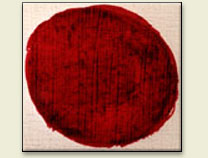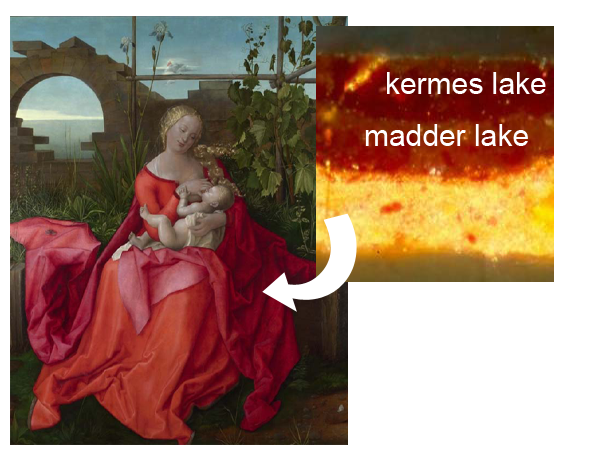
Brief description of Carmine lake:
One of the delights of autumn is, to walk through the woodlands and feast your eyes upon their coloring. For thousands of years, men have labored to satisfy this instinctive love of color by making beautiful things with dyes, stains and paints. Until the middle of the last century, when it was discovered that aniline dyes could be made from coal tar, most dyes were obtained from natural substances in plants or animals called carmine lakes. . There are two varieties of carmine lake, both produced from insects, cochineal lake and kermes lake and both employed as a dye and lake.
Names for Carmine lake:
| Alternative names: | cochineal lake, crimson lake, kermes lake | ||||||
| Word origin: | The name "Carmine lake" comes from Carmine comes from Latin carminium from Sanskrit krmija- = (red dye) produced by a worm; krmi = worm and from Latin minium = cinnabar or red lead. | ||||||
| Non-English names: |
|
||||||
| Origin: | animal | ||||||
| Chemical name: | Carminic acid (Cochineal), kermesic acid (Kermes) |
Example of use by artists:
The secret of the old Masters pretty shadows

Workshop of Albrecht Durer, The Virgin and Child (1500-10). Cross section of deep red paint from the shadow of the Virgin’s dress, The National Gallery, London.
Although red lake pigments, cochineal, kermes and madder can be used in a range of binding media, artists often exploited their translucency by using them as glazing pigments. Lake pigments were therefore frequently applied in oil, or oil to which a little resin was added to further enhance the translucency. This is the case for the upper layer of kermes lake from the shadow of the Virgin’s robe in Workshop of Albrecht Durer, The Virgin and Child.

